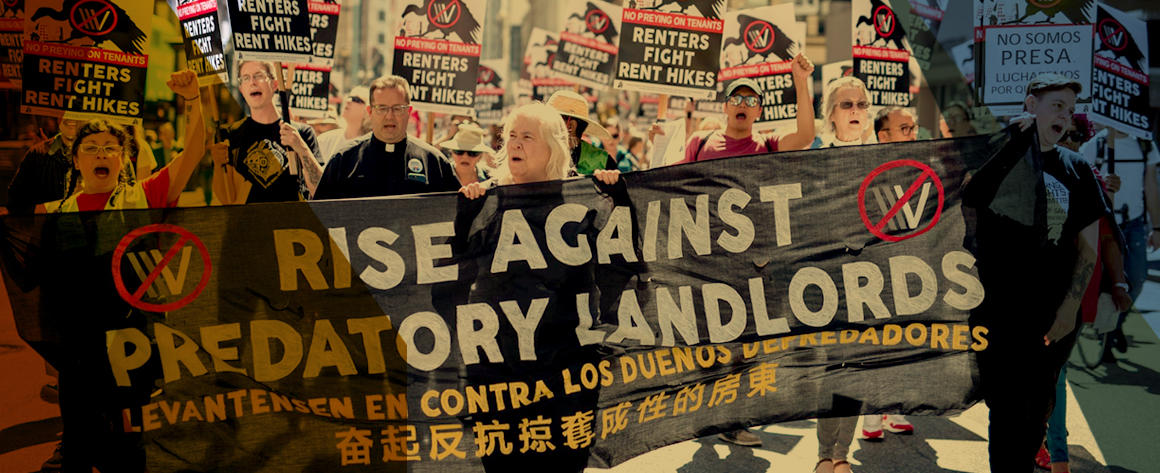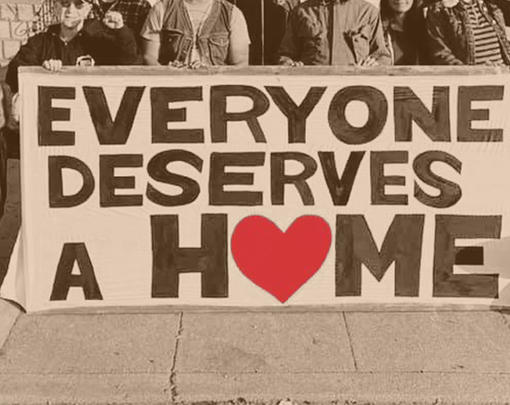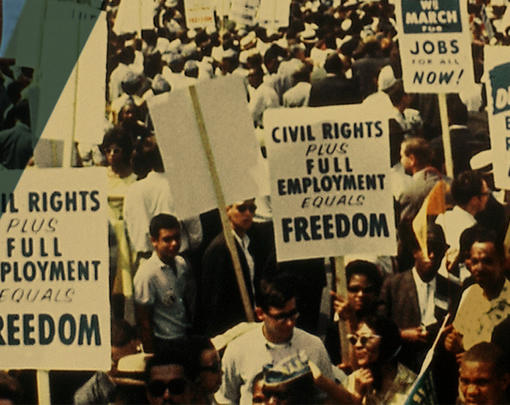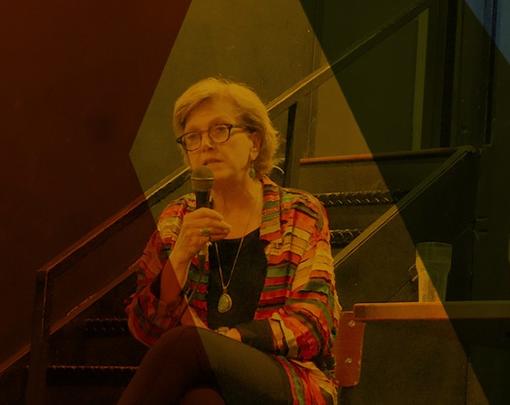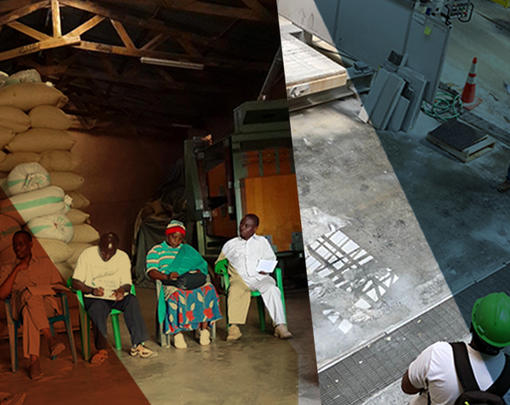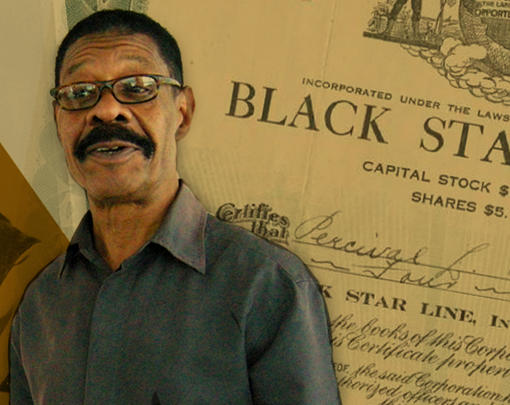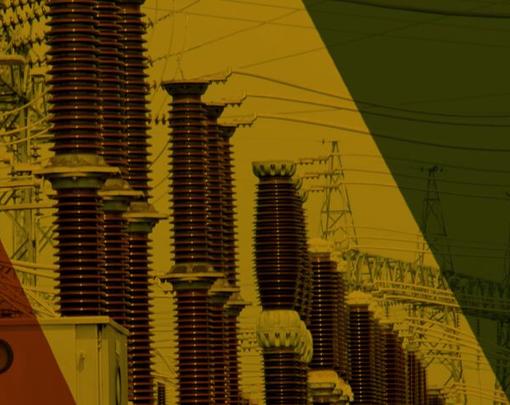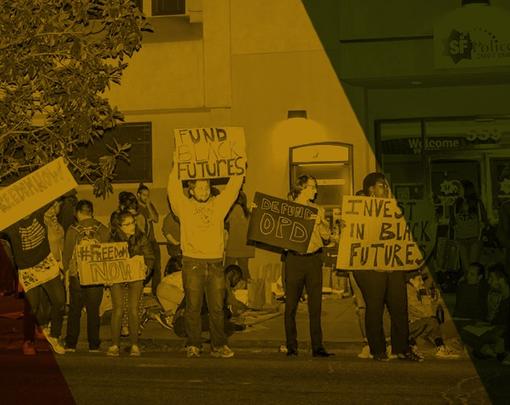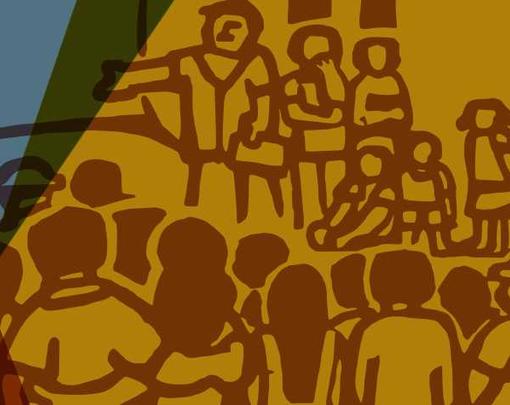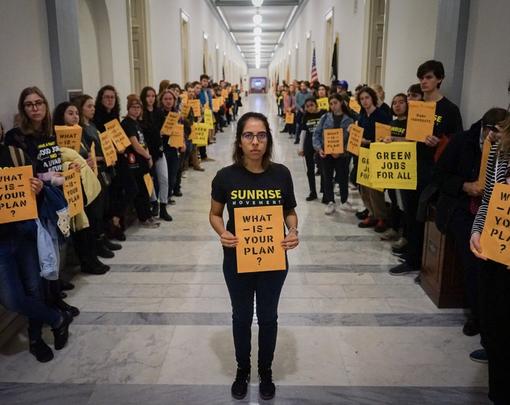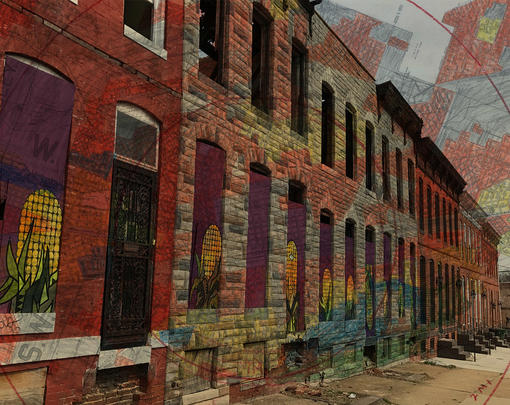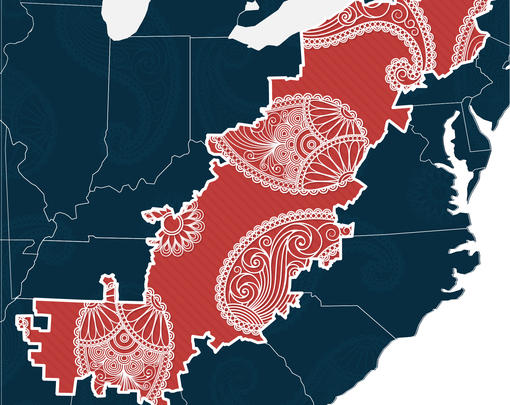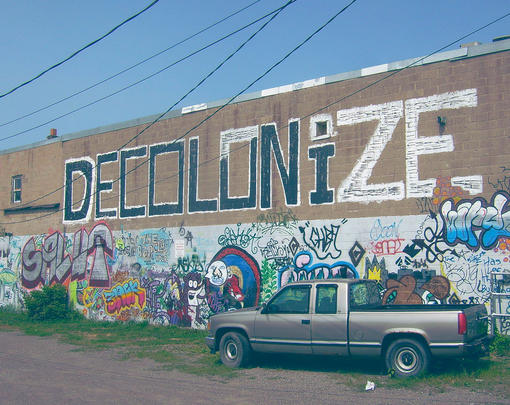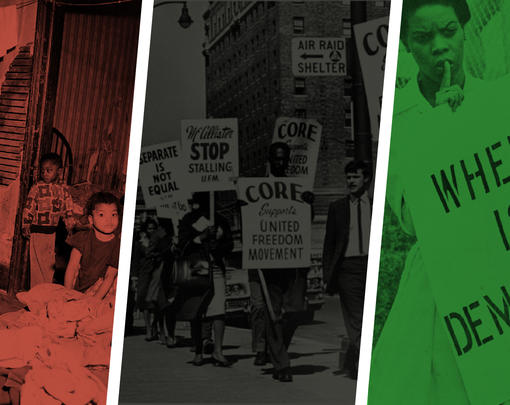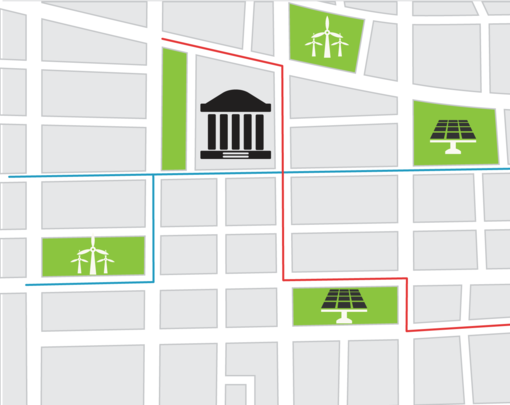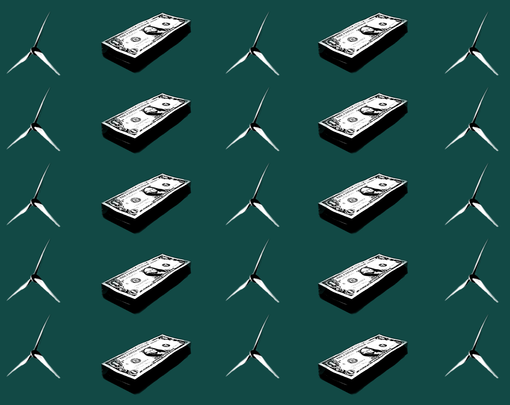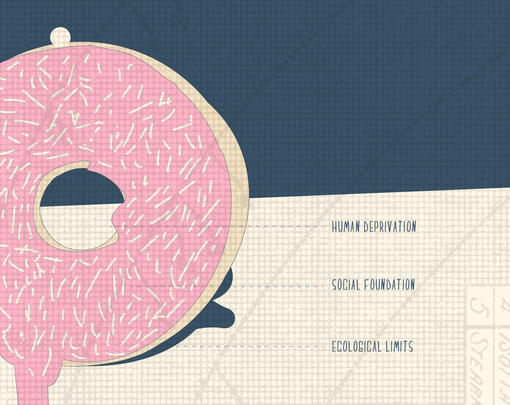The United States is in the midst of a housing affordability crisis, with at least 21 million households spending more than 30 percent of their income on housing, and an estimated 553,000 people completely homeless. Its roots are systemic, and this edition of The Next System Podcast features people at the front lines of the crisis and activists fighting for transformative solutions based on the principle that housing is a human right. You will hear from Christy Respress of Pathways to Housing DC, Stephanie Bastek of Stomp Out Slumlords, Tiana Caldwell of KC Tenants, Tara Raghuveer of People’s Action, and The Next System Project’s Peter Gowan.
The Next System Podcast is available on iTunes, Soundcloud, Google Play, Stitcher Radio, Tune-In, Spotify, and via our RSS feed.
Photo: Brooke Anderson Photography
Adam Simpson: Today we’re talking about a foundational economic issue that too often gets left out of political conversations. Today we’re talking about housing, the effects of the current system, and the levers available to change it into one that prioritizes health, safety, and security over profit. Any conversation about the housing system and how to transform it should begin by centering those people most profoundly neglected by it, specifically the people deprived of housing altogether. That’s why I’m speaking with Christy Respress, the executive director of Pathways to Housing DC, about her organization’s approach to confronting homelessness in Washington, DC.
Christy, part of what draws me to Pathways to Housing DC and the work that you do there is the Housing First approach to providing support to people experiencing homelessness. Can you tell me a little bit about that approach?
Christy Respress: Sure, absolutely. At Pathway to Housing DC our mission is to end homelessness for people who have serious mental illness or other really complicated health conditions, like substance use, using this Housing First model, Housing First approach.
What does that actually mean? It’s actually pretty simple. We start by asking every person that we meet on the street, how can we help you? If they say that they want a place to live, we start there and we consider them ready for housing, which sounds probably pretty straightforward but, unfortunately, historically in our country people with serious mental illness and substance use disorders really have been required to seek treatment or be cured from those things before they even get housing. So, what that does mean is that many, many people had to prove they were ready, but also they ended up staying on the streets for years and decades because of those barriers. But with Housing First and at Pathways, if someone says they want a place to live, we consider them ready. But the difference is we provide people in Housing First with really intensive wraparound support services really customized to whatever their need is, whether it’s a mental health team or a case management team. But it’s really based on that person’s individualized desires and what goals they have for themselves.
Housing First—I want to say, though—is not something that every American needs. Most people in our country experiencing homelessness are going to resolve that on their own. They lost a job. They’re able to get back on their feet or maybe they need some kind of subsidized housing, something to help make ends meet. But Housing First is targeted to people who have or are experiencing what’s called chronic homelessness, which is a very wonky term and all that really means is that they have a disability of some kind and they’ve been homeless for at least a year. So we’re really focusing Housing First on people who need both the affordable housing, but also the support services to be successful.
I would just say lastly about Housing First, one of the really important tenets about it is that it’s not temporary housing. It’s permanent housing. People ask me all the time, “Well, what does that mean? Do people graduate from a Housing First program?” And the answer is not usually. Often people need or almost always need the permanent housing side of it because they recover from mental illness and addiction much faster than they recover from poverty. So Housing First in its most simple form is housing plus support services, and we don’t require people to have treatment in order to be housing-worthy.
Adam Simpson: You mentioned that on the one hand housing is very multidimensional. You touched a little bit on substance abuse, on mental illness, but as well there are economic factors. You mentioned it’s easier for people to learn to cope and to start getting by once they have housing to address some of these issues, particularly when it comes to mental health or addiction and things like that or resolving domestic abuse, which I know for instance, can play a large role in driving people out of their homes. But what about the economic context in terms of people living paycheck to paycheck or maybe housing prices? As you suggested, poverty is kind of hard to cure. Can you tell me about how the Housing First approach encounters the broader economic conditions that lead to poverty?
Christy Respress: I think we have to have this conversation because there’s no universal reason that people are experiencing homelessness except for one thing, and that one thing is that because they couldn’t afford housing in one shape or form. It could be that they can’t afford housing because their $750 Social Security Disability check, which is what it is here in DC, won’t pay the cost of the $1900-a-month apartment that’s the average apartment rental rate here in DC. Purely economic.
Or it could be that the person is working minimum wage. We see that all the time that people are experiencing homelessness and working because their wages haven’t kept up. In DC, you have to work about 90 hours a week at minimum wage to be able to afford rent. That’s just not doable or sustainable. So our work in Housing First also includes a lot of street outreach and street homeless outreach work where we’re encountering people who aren’t just in our housing program, but we’re connecting them to all sorts of programs. I will tell you, one of the number one things people ask for besides, of course, housing is work. They are dying to work. They want to work, but the wages just have not kept up and it’s not possible. It’s out of reach for most people that we experience. Even people who aren’t working minimum wage, we see more and more people, again, who are holding jobs and trying to stay working and employed while experiencing homelessness.
This is about economics, and the contexts that lead people to homelessness are many but those things are the universal things. People don’t have the income to meet the housing costs that are rapidly changing and especially in a community like ours in DC that is rapidly experiencing things like gentrification and skyrocketing housing costs.
Adam Simpson: Christy, I know you talk to a lot of different people about your work. I wanted to ask, is there something that tends to surprise people about housing and homelessness that you encounter a lot? What are some of the kind of things that people fail to understand about housing and homelessness in your experience?
Christy Respress: That is a great question. I think there are a lot of things that surprise people. I think one of the first things that surprise people is when I say it really can happen to anyone, although that’s becoming less and less surprising to people, unfortunately, as our economic conditions are changing in our community. Again, the wages aren’t keeping up with housing. I think more people are starting to recognize that it could happen to them because so many people are living paycheck to paycheck. But we work with people who have college degrees, law degrees, sports players, people who have serious mental health challenges or addictions that come from all those backgrounds. I think that is surprising to people, but becoming not so surprising now. Really, mental illness and addiction don’t discriminate, which is a group of people that we’re focused on. But overall, people are starting to be less surprised when I say it really can happen to anyone.
But I would also say the other big surprise, again, thinking especially about the people that we work with at Pathways, people with serious mental illness: About two-thirds of the people that we work with are living with schizophrenia or bipolar disorder. About 80% of the people we work with have some substance use challenges. So, I think the surprising thing for people really, where they have an image of what that looks like and have painted a picture from movies and the media, is that people get better. People recover their lives. People get better. I think there’s just this misconception, again, that people with the most serious mental health and addiction challenges just won’t get better. But in actuality, nine out of 10 people that we work with in Housing First are successful and stay in housing with supports, which incidentally, when I talk to private landlords in the private sector, is the same success rate that they have as private sector landlords renting to just a general renter coming from anywhere. Housing First works and people recover.
Adam Simpson: I guess this is moving back towards the bread and butter economic issues, but in the context of housing prices rising pretty much continuously, is that something that frustrates a Housing First strategy?
Christy Respress: Well, here’s the tricky part of it. The answer is yes, because we have a limited amount of dollars that we get. In our program at Pathways, we have 587 people in our Housing First program. That means people living as neighbors all over the city. About half of our funds are federal and half of them are local. At the end of the day, our contracts, we only have a certain amount of dollars to play with. So if the housing costs, which they are, continue to skyrocket—when we started this work the average apartment, one bedroom, that we were renting was about $800. That was in 2004. Now, it’s $2,000. So when we have the same amount of money to help a large group of people, that means that we can rent fewer and fewer units. So that affordability price people think, “Well, it’s affordable housing. How would that impact it?” It’s that when we have a finite number of dollars to play with that means fewer people get into housing. It’s great that people have a lot of housing options, but the cost increase with just the average unit here in our community is skyrocketing so high. We’re going to be able to serve fewer people with the same dollars.
Adam Simpson: Well, let me ask you this. One component of a new homes guarantee policy that we’re discussing later in this program is it proposes to build out across the country 600,000 permanent supportive housing units to basically serve as a place where people could fall back on in the event that they’re facing eviction or basically a Housing First approach in the form of public housing. Are there any effects you might predict from that type of national Housing First initiative?
Christy Respress: Well, yeah. I could predict one effect. We could actually end homelessness. I mean, I say this with a big smile on my face that in any national effort to do this and to guarantee the investments that we need will have an outcome which will be ending homelessness. I will tell you, we all know this. It’s a math problem. We can’t expect outcomes without the dollars behind it and without the investment. Our budget will be that guide, whether we’re going to end homelessness in our country or not.
For example, under the Obama administration, there was a clear mandate that we are going to end veterans’ homelessness. We have made incredible strides not only in DC, but around the country. And why is that? Because there were huge investments made on providing permanent supportive housing but also affordable housing vouchers for veterans, as we should. So we know when we put the resources behind it we see outcomes. So yes. The effect would be we could actually end chronic homelessness for people who are living with disabilities. It’s doable.
Adam Simpson: Thanks, Christy.
While homelessness is the worst case scenario of our housing system, the challenges that face tenants, such as on the one hand continuously neglected properties and on the other continuously rising rents, in addition to the threats of eviction, are perhaps more widely familiar. That’s why I talked to Stephanie Bastek, a grassroots organizer working on housing justice in Washington DC with a group called Stomp Out Slumlords.
Adam Simpson: Stephanie, first off, what is Stomp Out Slumlords and what outcomes are you all organizing around?
Stephanie Bastek: Stomp Out Slumlords is Metro DC Democratic Socialists of America’s tenants’ rights project. So we’re organizing around housing and specifically tenants living in private housing. Public housing is a huge portion of housing in DC, especially low-income housing, but the rules and regulations are slightly different. So our focus is mostly on private housing.
Initially we started out doing anti-eviction work. We would canvass people in DC who were up for eviction, being sued by their landlords, because unlike many other jurisdictions, in DC a landlord is required to file a suit and that is public record. We can very conveniently look that all up online. So we look that up. We go and we do anti-eviction work. We talk to people and inform them of their rights and encourage them to go to court. We quickly realized that we couldn’t actually flood the courts in the way that we had anticipated. Our original plan was to use our anti-eviction canvassing to throw a wrench into the eviction machine and make it much less profitable for landlords to evict tenants, because right now it costs $15 to file an eviction suit. If your tenant doesn’t show up to court, they automatically lose and they’re evicted.
But with the numbers that we were turning out and the people we were able to reach, we were having an effect in people’s lives but we weren’t quite having the systemic effect we wanted. So we rapidly shifted, starting really at the end of last year into doing building organizing. So anti-eviction work became a way for us to identify especially problematic landlords, management companies, and see whether there were tenants living in these buildings who were interested in organizing for better conditions.
Adam Simpson: Throughout this process, either when you’re talking about trying to intervene and disrupt the eviction machine, as you put it, or whether it’s organizing tenants building by building, I’m sure there are a lot of things that you and your fellow organizers observed about housing in DC and probably about housing in that part of the economy more broadly. Can you tell me a little bit about what you learned about the broader housing system or something that you think might surprise others?
Stephanie Bastek: Yeah. I think the biggest takeaway from our work is that neglect is really profitable for landlords, especially in a hot housing market like DC. It is very profitable for landlords to let their buildings deteriorate over time, not respond to current tenants, especially if they’re rent-controlled tenants, and let the quality of that apartment deteriorate so that the tenant will either get fed up and want to leave or be forced out through some vindictive eviction suit, and then the landlord can raise the rent for some nice new tenants to move in.
So we’ve seen that eviction and passive eviction through neglect has been a really easy way to speed gentrification up in the city and accelerate the mass exit of Black and Brown residents from DC. In the past 20 years, something like 20,000 Black and Brown residents have been leaving the city, which is pretty astonishing.
Adam Simpson: Can I, just for clarification, when you say that, for instance, neglect is profitable, what you mean is these landlords, they’re not spending on their apartment, which are deteriorating. Obviously, there’s no cost there. But then eventually people are forced to leave through those conditions and then they flip the house, which is the gentrification factor? Is that right? Is that what you observed going on?
Stephanie Bastek: That’s part of it. That’s definitely part of it. As you say, money you’re not spending on fixing water damage or a broken microwave or a leaky faucet or dealing with rodents is money that the landlord just pockets. I think it’s important to remember—and we don’t often think of it this way even though we should—your lease is really a two-way street. You’re paying rent in order to get services in exchange. There are supposed to be laws regulating the quality of those services, but really the law is just about as good as the people enforcing it. The people enforcing it in DC are not very good at their jobs, especially DCRA, the Department of Consumer and Regulatory Affairs. It pretty much takes a fire, a literal fire, for them to wake up to the conditions in a building or the fact that something is an illegal rental, things like that.
So it is partially that, but it’s also that with the example specifically of rent control, that there are currently in the rent control laws on the books in DC, vacancy increases that are allowed. In DC, rent control is tied to the unit. It’s not tied to a person, as in a voucher system. So a whole building is, generally speaking, under rent control. But through things like voluntary agreements or things like vacancy increases, when a tenant that’s been living in a unit for 10 years, say, has been neglected by the landlord, has had their quality of life decreased through neglect in that unit, when they move out, the landlord is allowed to do a much bigger increase on the rent. I think it’s 20%.
Adam Simpson: I see.
Stephanie Bastek: It’s a lot. You’ll have to fact-check those numbers, but they’re allowed to increase it by much more than they are on an annual basis, because in an annual basis they’re capped to the Consumer Price Index or the cost of living inflation plus 2%. So when an old tenant moves out, they’re able to then rent it out to a new tenant for much more without fixing up the apartment.
Or another way that they can get at flipping that unit is by doing something called a voluntary agreement or a hardship petition—all things that hopefully will be done away with this year, although no promises there—which basically allow a landlord to, again, raise the rent in exchange for improving some small number of things and usually forcing older tenants out and then raising rent for newer tenants. It gets kind of wonky, but basically there are a lot of loopholes built into the law that allow that to happen.
Adam Simpson: Stephanie, when I was reading Stomp Out Slumlords’ anti-eviction manual, I remember reading that, “Housing can only be a commodity as long as owners have the right to deny shelter to people who do not pay.” That jumped out at me because of the concept of the commodification of housing. I know that, for instance, I don’t think that anyone is using the word “decommodify,” but there are some housing policy platforms being put forward. I know that People’s Action has a new report about a homes guarantee that is very much explicit about decommodifying housing. But I wanted to ask you what does it mean to you that we might decommodify housing? Do you think that that’s something that can be achieved? Well, I guess what I’m trying to get at, Stephanie, is can we tie a connection there between organizing tenant power and that type of organizing to this concept of decommodification?
Stephanie Bastek: Yeah. I think an organized body of tenants is much better able to resist real estate speculation, which is one of the reasons why people want to decommodify housing. It’s become a place where very rich people and investors can just park their money and then count on rising real estate values and rising land values, the desirability neighborhoods, blah blah blah, in order to cash out on their investment later just because they happen to have the capital to buy that plot of land or that building or that apartment to begin with.
So I think there are many different ways to think about decommodifying housing. Land trusts are one way that are kind of popular, or not popular, but land trusts are one way to do it. But there’s also things in DC like cooperatives, which are not exactly decommodified housing, but there’s situations where a group of tenants each owns their own unit, but they’re paying dues into the cooperative and they collectively live in their building. They’re limited in terms of how much they can sell that co-op unit for later.
It’s a hard leap, I think, to go from the rampant wild speculation we have now to an absolutely decommodified market. But there are ways to make or to slow the speculation in the real estate market. Laws like rent control are a really great way to do it. Sorry to toot the rent control horn a lot, but Stomp Out Slumlords and DSA are part of a Reclaim Rent Control coalition that’s pushing for expanded, strengthened, and repaired rent control because several studies have shown that when you have strong rent control laws on the books, that limits the amount of real estate speculation that can happen, which is what is driving up rents and what is driving up housing costs. So I hope that answered your question.
Adam Simpson: Absolutely. I mean a lot of the policy interventions being discussed, for instance, in a new homes guarantees proposal that I mentioned previously or in Sen. Bernie Sanders Housing For All proposal do include things like national rent control or building new social housing units, and just-cause protections against evictions. I’m sure you agree with a lot of that, but as someone who’s connected to this organizing effort to disrupt the eviction machine and to organize people to have some control over their own housing situations, are there particular policies, solutions, or approaches that resonate with you? I know we’ve heard a little bit about that already, for instance, regarding rent control. But are their particular policy approaches that you think would be effective in disrupting this machine?
Stephanie Bastek: I think that we do have to limit the amount that people can profit off of housing because the profit motive is really what drives so many of these unjust policies. If there weren’t that super strong profit motive to invest and speculate in real estate, we wouldn’t have to demand all of these just-cause protections for evictions or mandatory representation. Obviously those things should be on the books anyway. But the reason we have an eviction crisis is because profit is such a strong motivator for capitalists, I guess, if you want to be blunt. So yes, there are a lot of planks on that that appeal to me.
I think on the one hand you do have to strengthen protections. In DC, we’re really lucky that we do have pretty strong tenant protections on the books. One of the things that we’ve seen when other people in other places across the country want to adapt what we’ve been doing is that they just don’t have the public records accessibility or the laws to do what we do. A lot of states don’t have just-cause protections. There’s no notice for evictions. You can just decide to evict someone. Obviously, you need that kind of protection.
But I also think it’s pretty clear we just need to build a lot more housing. There are laws in DC like exclusionary zoning that severely limit the amount of new housing that can be built. We do need to build new units, but at the same time, we also need to protect the units we already have and the tenants we already have. So I guess it’s a yes-and answer. We need all of these things.
Adam Simpson: Finally, just a question that I was thinking. In terms of when I think about Stomp Out Slumlords and the work that you’re doing, a lot of it is about building an organized type of power for tenants to either engage in on a building-by-building basis or I know that there have been talk of a broader tenants union in terms of scale. But when it comes to building that power, are there policy interventions that can do that or is that outside the realm of policy?
Stephanie Bastek: I don’t think that there are explicit policies you can write that will encourage or even reward people for organizing. That’s just not in the interests of the people who write policies, unfortunately. It really does have to be something that people are motivated to do themselves. That being said, I think it is much easier to organize in a place like DC where it’s perfectly legal to withhold your rent if your landlord isn’t delivering on the promises laid out in your lease. Or it’s much easier to go on a rent strike in a place like New York, where you have guaranteed representation in landlord-tenant court, or in a place where there are rent control laws and there are models for things that you can fight for in your home that other people also have. So better tenant protections enable people to feel safer when they organize.
I don’t think that if we broaden tenant protections people will be less motivated to fight for things because things aren’t as bad. I mean, landlords will try to find loopholes no matter what laws are on the books. We see that in DC, which is often touted as a tenant’s city. Let me tell you, it is not a tenant’s city if you consider that nobody is really fighting for us on the council. I mean that’s the reason why we formed the DC Tenants Union, because there really is no voice in government for us even though allegedly we have all these great protections on the books.
Adam Simpson: Thanks, Stephanie.
Now that we’ve talked to folks on the front lines on efforts to confront the shortcomings of the housing system in the United States, I want to turn now to a panel of folks who have been involved recently in developing a new set of policy proposals that seek to decommodify housing and transform the contours of power between the working people that need to use the land and the people that seek to profit off of it.
Adam Simpson: We’re now joined by Tara Raghuveer, the housing campaign director at People’s Action, my colleague, Peter Gowan, a senior policy associate here at The Democracy Collaborative’s Next System Project, and finally, Tiana Caldwell, who’s been working with the grassroots organization, Kansas City Tenants.
I think most people know intuitively what this proposal, this national Homes Guarantee proposal is gesturing toward just by the name, a national homes guarantee. But I’d like to know what the national homes guarantee means to all of you. But before we get there, I understand that you, Tiana, have had a very painful experience struggling with the housing market, if it’s fair to refer to it as the housing market and leave it at that. But can you tell us about your own experience and how that informs your engagement with this project?
Tiana Caldwell: Yes. I have recently, just this past year, been evicted. I got evicted by my landlord because I was diagnosed with ovarian cancer for the second time. I went through a lot of struggle being homeless at that time because not only was I diagnosed, I had started treatment. I was actively in treatment and very sick, and I was homeless, my husband still working and me still working when I could. I was in and out, trying to remain some sense of normalcy and having to look for a place to live.
We did finally find something and all they wanted was double the deposit. For us, it was a relief. I mean as terrible as it sounds, it was a relief for us. We could do it. We were like, “Yes.” So we did do it. All and all, we paid $4,000 to get into this house. The first night that we all took showers the first night we were there, sewage backed up through the house. I’m talking standing water with actual human feces in it. You could see it, smell it. You could taste it in the air.
Adam Simpson: That’s awful.
Tiana Caldwell: We couldn’t stay there. The housing authority, then the health department, everybody kind of got involved, even the city, because they knew this was an ongoing problem. The health department said that it was uninhabitable, which was great, but they don’t have any options for you. It just means you can’t be there. They sent notices to [the owners], but there was no real action taken against them or to make them do anyway. They did some digging, which actually made things worse, and then said that that’s what they could do. They weren’t going to do any more and we could move if we wanted to. No offer of getting any payment back or giving any money back or any of that. So we were out $4,000. Even still, they were allowed to sell the house. They didn’t even disclose what was wrong with it to the new owners because they reached out to us. We found that out. We were out that money and ended up living for about six months, spending $500 to $600 a week at hotels until someone finally gave us a chance.
It was really hard. Like I said, I was in treatment. I have a 12-year-old son who desperately wanted to stay in his school with his friends where he had built community and friendship and all of the things. The whole time we’ve been here, he’s been there. And then we were faced with this simply because I had gotten sick. There’s a lot of shame. A lot of shame, a lot of anger and pain.
Adam Simpson: I mean it strikes me listening to your story, Tiana, that along the way there were so many different points and so many different institutions and people that failed along this ordeal you went through.
Tiana Caldwell: Yeah. There was absolutely no protection. Even when you did tell the right people, there was no enforcement. The way things are written, it protects the people who are responsible. So it was a real eye-opener. It was a really bad experience, especially given what we were going through at the time.
Adam Simpson: Tara, I want to follow on where Tiana left us. Can you tell us a little bit about the process and how you came to meet Tiana and people that have faced similar issues with regard to housing and about how that process has led into the homes guarantee proposal?
Tara Raghuveer: Sure. Well, I’m from Kansas City. I should start there. For about six years, I’ve been researching evictions in Kansas City, mostly on the Missouri side, so in Kansas City, Missouri. In the last two years, I have been organizing a national housing campaign. That’s kind of where the homes guarantee began. But when I met Tiana it’s where this stuff gets deeper and richer, and in the last year is kind of the period during which the homes guarantee has really grown into the thing that it now is, the force of nature that it now is.
So I moved back. I actually made the decision to move back to Kansas City at the end of last year. That was around the time that I got in touch with Tiana and her husband. They found my number on the Internet as a result of my eviction research that’s been going on in Kansas City for some years now. We met up and we had a conversation. Tiana ended up actually being one of the first leaders who I recruited into an organization that we founded together called KC Tenants, a group of poor and working-class tenants in Kansas City who are organizing to ensure safe, affordable, accessible homes for everyone. So homes guarantee is part of the theory of organizing that we started with here in Kansas City and also now because of some of my past national work, KC Tenants is connected in with this national movement for homes guarantee. That vision came from public housing residents and folks who are experiencing homelessness across the country.
About a year ago we gathered about 50 of our national leaders together, and the organizers were trying to make it nice and easy and design a campaign around something small and winnable. Basically our grassroots leaders staged a coup and said, “We can’t possibly do that. Actually our lives are impacted by the issue of housing and justice in so many different ways that we need to be the group that’s organizing for the big systemic change that will actually change our lives.” So they came up with the framework of the homes guarantee, the idea being very simple, that in the richest country in the history of the world, we can and we must guarantee that everyone has a home.
Adam Simpson: I have a lot of questions about that. But Peter, I want to turn to you. Now that we’ve heard about the experience of housing in this country, we’ve heard a little bit about the process that went into this national homes guarantee. I know that there are a lot of different components of this proposal, but could you tell me in broad terms what you think this policy, what is the intention of the national homes guarantee?
Peter Gowan: I think that at the core of what we’re trying to get at is that the function of housing in this country and what it has been for a very long time is as a commodity, something for people to make profit on and not something that people need to live in. So when you have situations like Tiana’s situation or the situation of the other tenant leaders that are involved in this movement who are experiencing significant hardship, whether that’s because of poor conditions in housing, unaffordable housing, homelessness, and criminalization of being homeless, skyrocketing rents, predatory foreclosures by banks after loans made on predatory terms. All of this has at its root this idea that housing is a commodity and not a place to live in. So what we try to do with the homes guarantees and the core policy proposals about it is first that we need to start moving away from this profit orientation and stabilize people who are already in place.
For some people, like public housing tenants, that means a lot of public investment in renovating their places, making the homes fit for habitation and turning them into green resiliency centers so that they’re fit for the future under climate change. This is decarbonizing places and putting in new low-energy appliances that cost people less money in the winter. For people who are already in the private rental sector who are often suffering from skyrocketing rent increases, we want to have a national rent control standard that is truly universal and applies to everyone who’s renting from a landlord in the country. That, combined with a just-cause eviction law, gives tenants more ability to organize because they can’t be threatened with eviction just for organizing as tenants. It also gives them a measure of stability. The first component there is stabilizing people in place.
Then we also have a forward-looking policy which is that we want to construct 12 million new units of social housing that would be permanently affordable and off the private market. We say that there are multiple models that those could be built through, whether that be municipal ownership or ownership through housing authorities, limited equity cooperative ownership, community land trusts. But really what we want to see is millions and millions of new social homes that are permanently off the private market.
Then we also want to see is that the damage that’s already been done by this, which has been heavily racialized, to start being repaired. What we need for that is to have real investments in working-class communities of color who have been damaged by redlining and decades of racist housing policy and really start trying to rectify the damage that’s been done by racial capitalism to this country, especially through housing.
Adam Simpson: Tiana, I keep coming back to the story you started us off with. We have this national homes proposal in front of us. Is there a component of it that in particular or uniquely resonates with you? I’m not asking you to pick one, but is there part of this that given what you’ve been through that you think would really lead to the kind of change that you would want to see in the housing market? Is there one in particular that resonates with you?
Tiana Caldwell: Safety is probably a big one. It has so much to do with health and being stable and even being able to focus on everything else. For me, safety has a lot to do with my health. It’s the biggest part of what my family is dealing with right now and we didn’t feel safe in that house for me to do the things that I needed to get healthy because we had all these other things going on. We were afraid to be in the house that we paid $4,000 for because of what it could do to our health, and the fact that there’s no enforcement. I mean, everyone agreed with us, but nobody, none of the agencies, not anyone who had the authority, no one got behind it and actually enforced what was written or used their power to make sure that me, as a tenant, and my family, that we were safe and that we have options. There were none for us. The property owner who had put us in this situation had all the options.
Adam Simpson: Tara, how does the homes guarantee in your mind change the contours of power? Because landlords have power in our current context, tenants don’t. What to you does a homes guarantee change about the imbalance?
Tara Raghuveer: I think the first way the homes guarantee moves power from the landlord and owning class and towards tenants and regular people and workers is that the homes guarantee is a demand that came from those regular people. So the framework itself, I think, is quite revolutionary in a transfer of power because the theory is about universality. This isn’t about we need more access. The homes guarantee is about everyone deserves this basic thing as a public good, as a guaranteed human right. I think the very framework redistributes power towards the people who need it.
And then I think there are several ways in which the policy at every level transfers power to the tenants. I think one that I would zero in on is we have a whole section of the homes guarantee, as Peter described it, that’s related to tenant protection. It protects, of course, the tenants’ rights to organize, to collectively bargain, freedom from retaliation. There’s also a national rent control standard that’s part of our call for a national homes guarantee. Each one of these policies as well as deeply invested public housing and social housing and the restorative justice and the climate provision, every single one of these policies is a way of giving back tenants the power that they’re owed.
It’s taking power away from the 1% and from the corporate elite and from the people who are currently in power who are exploiting and extracting our local economies and tenants across the country.
Adam Simpson: Earlier, Peter, you mentioned the commodification of housing. What I’m thinking about now is housing played a significant role during the 2008 financial crisis. In many ways, housing is treated like a commodity but also, to a certain extent, like a casino. This type of market has caused broader economic downturns before in the sense that the current system is already not very sustainable and reliable. Do you think that there would be economic difficulties by tilting the housing market back toward working people rather than the capital class? Or are there any significant shocks that you could predict? Or how do you think we might deal with those?
Peter Gowan: I think that it’s important to say that housing and the housing market is a really important source of financial instability and it has been for a very long period of time. So what we built with the commodification of housing is we tell people in their 20s, 30s, and 40s that they should go buy a home because it’ll be your security in retirement.
Adam Simpson: And maybe one day you can be a landlord?
Peter Gowan: Yeah. Well, but even just owning one home or for some people they get told, “You should invest in property because property always goes up.” In order for that promise of stability later on to actually be brought into reality, that means that house prices have to go up by a really, really substantial amount in the interim period. That means that everyone else getting onto the ladder in their younger years is paying more and more and more money not just in nominal terms but in inflation-adjusted terms as well.
The idea of housing as an investment is really incompatible with the idea that housing should be universally affordable. Now, obviously, there are people at the moment who have a lot of wealth that’s tied up in their homes. We think that it’s important that when we are moving away from the speculative market that we don’t let any working-class people who are genuinely vulnerable who are in negative equity to their banks or whatever are left behind. But it is important for us to recognize that the goal of providing safe, stable, truly affordable housing to everyone is, in a certain sense, incompatible with people making millions and millions of dollars off the housing market as a good investment.
In order to actually have those profits go so high, you need to have the threat of, “If you don’t pay this much money to rent your house from this landlord who’s making a bunch of money for his investments, then you’ll be homeless or you’ll be living in terrible conditions or you’ll have to rent with six or eight of your friends into a tiny, cramped, little apartment just to keep a roof over your heads.” So it’s important to manage things and make sure that nobody is being left behind who’s genuinely at risk. But I don’t think that we should be crying too many tears for Blackstone and big corporate landlords and the real estate capitalist class.
Adam Simpson: Fair enough. Fair enough. I want to move now to talk about what race and systemic oppression looks like in the housing space. I think a lot of people are probably familiar with stories like the, I have written in my notes, unequal distribution of GI benefits, but it’s more than that. As I understand it, it just wasn’t extended to anyone that wasn’t white, but also the history of redlining and things like this that go on in the housing market. This question really is for anyone: Could you articulate what that type of systemic oppression and racism and white supremacy looks like in the context of housing in our current context?
Tiana Caldwell: My grandmother was picking cotton at six years old on a plantation. My grandfather, her husband, and my dad were both in the military. Neither one of them received the benefits of the GI Bill. My family personally has been on a lifelong journey in poverty, where that might have been a breakthrough for us where my mom may have had stability in her life and been able to pass that on to us. So I think it has a really big impact on what our lives look like today.
Peter Gowan: That story has been so common across so many different people in America. I think that in the postwar period, you had white people who bought houses with government-subsidized loans and were able to build wealth off that because of a scarcity of housing that existed for other people. It was the poor quality standards in the rental market, public housing that was intentionally segregated and intentionally left without the investment that people needed to actually turn these into communities that have positive lives for people.
In other countries you see that you have integrated and high-quality social housing for people of all different walks of life in society. But America, you had one class of people who were given wealth through housing and who were given control over their housing situation, and another class of people who were the leftovers and who were basically put on life support, weren’t given effective control over the homes that they were living in, weren’t given good-quality houses. That legacy lives on through today. You have people who now own million-dollar houses which their grandparents were effectively given at subsidized rates after the war and who are able to pay little or nothing for housing up to this very day.
I think until we move away from that speculative model, we’re still going to have massive housing inequity in this country between people of color and White people. I don’t think that you can solve that just by giving a few individual houses to people or by extending a few loans because, as we said earlier, it’s built on a sort of casino model. Everyone can’t win. The US government decided that white people were going to win, but everyone can’t win in the speculative model. For everyone to win, we need a model that’s not for profit but for people.
Adam Simpson: Absolutely. Thinking about that kind of challenge, Tara, when you think about what reparations in this space, in the housing space, looks like can you give us a sense of what you envision for that kind of program? Or what the national homes guarantee might envision?
Tara Raghuveer: On the issue of land and housing policy, reparations is really complicated. I think the first place that we need to start is by acknowledging that providing restorative justice and reparative policy along the lines of land and housing is not the full scope of reparations that communities are owed in this country. In some ways, even when we just slice down into land and real estate reparations and restorative justice, it’s still extremely overwhelming because we have to start at the beginning with the theft of land from Native communities and the idea that property rights in this country were initially written to protect the property rights of an owning class that owned people.
So I think it’s a very complicated problem. The way that we try to break it down into the homes guarantee to think about the ways in which we might act on this through policy now that gets us to the big systems change that we want, one of them is that we actually need to zone for social housing. We need to end exclusionary zoning and start building housing off the private market that people can live in. That by itself is a reparative policy. There are a number of different ideas that we’ve written in there that literally just move money, capital, property, land to the communities that have been cut out from ownership and access to all of those things for a number of years.
We write in there, in the homes guarantee briefing book, an idea around zero-interest loans to Black and Brown communities that have been historically redlined, blockbusted, and all of the gross real estate practices that we’ve seen here that have an enduring and, of course, racist legacy. So that’s the beginning. But I do want to be honest and frank. I think about the fact that this is the area of the homes guarantee that I feel needs the most work. We want to make sure that everything that we’re doing with the homes guarantee is both forward-looking in that it’s providing sustainable, decarbonized, climate-friendly solutions, and that we’re not forgetting the fact that we’re building upon centuries of racism.
The reparations piece of the homes guarantee is so critical. We can’t have a conversation about housing justice in America without talking about what we need to do to repair the racist housing policies that have created the conditions for today’s crisis. We need to do a lot more to understand what exactly those policies need to be and how those reparative policies can exist without recreating some of the evils that we’ve seen in the economy as it currently looks. I think the final point to make there is that we don’t want to recreate the idea of home ownership as the only form of wealth-building. We actually want to dismantle that and decommodify housing while honoring, of course, the reality that many, especially Black Americans, have never had access to home ownership. So I think it’s a complicated balance, but one that we are struggling through with a lot of good intention and thankfully informed by the lived experience of people like Tiana Caldwell, whose family unfortunately has suffered the brunt of many generations of that racist land and housing policy.
Adam Simpson: My final question: Immediately when we say “land and housing” there’s already a connection to nature. I want to know how the transformation that we’re aiming for in terms of the commodification of land and housing, how does that relate to the current ecological crisis that we’re facing in terms of climate change? How should we understand that connection, and what does a national homes guarantee mean for the environmental crisis? Peter, could I start with you?
Peter Gowan: These things are so tightly bound up with each other. The current model of racialized home ownership and profit-driven housing has built us a housing economy where our cities are sprawling out further and further. You have people commuting two hours each way by car from a house out in the suburbs into their job in the city center, which is entirely unnecessary. You have homes that are built that are highly carbon-intensive that are wasting huge amounts of heat, that are using massively outdated appliances. So greener buildings and low-emission transit, making sure that everyone has access to public transit to work so that people aren’t always dependent on cars, will cut down costs for them, but also have a massive positive effect on the environment.
But then also the question of the environment also has a lot of links into racism and economic effects. I don’t know if you guys saw the Bernie Sanders rally near Queensbridge Park (New York) last weekend where you have the nation’s largest public housing complex built right next to a massive, dirty power station and people who are getting sick because of that. So environmental racism is a huge problem in our housing policy. Affordable housing and public housing has often been built in places that are considered too dangerous for market-rate tenants or homeowners to live in precisely because we have a housing policy that values those people less because they’re not investors, because they’re not making money for anyone. There’s similar stuff like that. I think that there are a lot of African Americans in San Francisco who are living on what used to be a Superfund site that was cleared for development by the government. It turns out that a lot of them are still experiencing radiation poisoning and sickness as a result of that. You see in decision after decision that the interests of tenants and working-class people, especially tenants of color, are the ones who get the least attention when there’s environmental disasters, when there’s environmental risks, because there’s less money in protecting them than there is in exploiting them. So I think that all of these issues are interlinked.
Adam Simpson: As we conclude, I want to invite anyone to make any final comments. But I just want to first appreciate this conversation. I feel like we’ve talked about housing as a really core economic and social issue in a way that I don’t think it often is in political debates. We’ve heard about how housing connects to the environment, how it connects to legacies of racism and even colonialism and how it relates to health. This seems like such a central issue and I just really appreciate the conversation we’ve had today. Does anyone have any final comments on the national homes guarantee or about housing, anything that we think has been left kind of on the table?
Tara Raghuveer: I think the conversation that we had was so rich. The one thing we didn’t talk about is the incredible amount of traction that the movement for a national homes guarantee has gained just in the past month and a half. Obviously, it’s been a years-long process of building tenant power, articulating these kinds of bold demands, and then aligning ourselves especially in the last one to two years, but just in the last month and a half, the grassroots-sourced vision for a national homes guarantee has broken through in a way that I think even the three of us in this conversation couldn’t have anticipated.
We launched our briefing book on September 5th, and on that day we had wall-to-wall, coast-to-coast conversations about housing, I think, unlike ones we’ve ever had before. Kind of leaving the question of Band-Aid solutions at the door and for the first time saying incrementalism is just not enough at this point. Incrementalism is dead. We actually need a systemic change in housing as the one needed in healthcare and as the one needed in education and all these other issues. So that happened on the day that we launched the briefing book. And then since then, what’s been incredible to see is now we have nearly 50 down-ballot candidates who are running on a homes guarantee, running to be a Congressperson of X district or Y district and their key issue is the homes guarantee.
We’ve got a group of legislators in Washington, DC who are working on a historic package that checks a lot of the boxes of the vision for a national homes guarantee, and grassroots leaders are involved in that process as well. And then not unimportantly, we have six or seven leading presidential candidates who have housing agendas, which is historic in and of itself. Then some of those candidates have also gone so far as to actually engage with these grassroots demands and talk about the need for radical investment in public housing and social housing and ultimately the decommodification of housing entirely.
So I think what we’ve seen in the past month and a half is really encouraging. The last thought, I think, I have to share on homes guarantee stuff is we’re going to win. I think we have the power across the country, the need is clearly there, and now that this vision has been presented, I think this is the radical imagination process that we had to go through to actually engage the base even further, and this is what we need to win.
Peter Gowan: I could never imagine that we’d have candidates talking about things like a national rent control standard, actually fully funding the construction of millions of new social housing units, taking on segregationist anti-social housing zoning laws. We have some really, really ambitious and positive proposals coming out of candidates. I would say particularly on this I think that Sen. Bernie Sanders has had the most exciting so far, although we may see more exciting plans coming out later on. Who knows?
But the extent to which ambitious housing policies have come to the forefront of the national debate in this campaign in a way that I don’t think I can ever remember them having done has been so important.
Adam Simpson: Yeah. Well, even beyond the campaign, I know that I was reading this morning that the Chicago Teachers Union, rent control for them is one of their key demands in a state, Illinois, where rent control is illegal at the state level. So this does seem to be an issue that is energizing and mobilizing a lot of different people.
Peter Gowan: It sure is.
Adam Simpson: Well, again, I can’t thank you enough, Peter Gowan, Tara Raghuveer, and Tiana Caldwell for our conversation today. I thank you for your time and the conversation.
That’s all for this episode on The Next System Podcast. I’d encourage you to learn more about our participants and their organizations, Pathways to Housing DC, Stomp Out Slumlords, People’s Action, and Kansas City Tenants by referring to this episode’s description. As a reminder, you can find transcripts for all of our podcasts at thenextsystem.org/podcast. Thanks for listening. I’m Adam Simpson.






